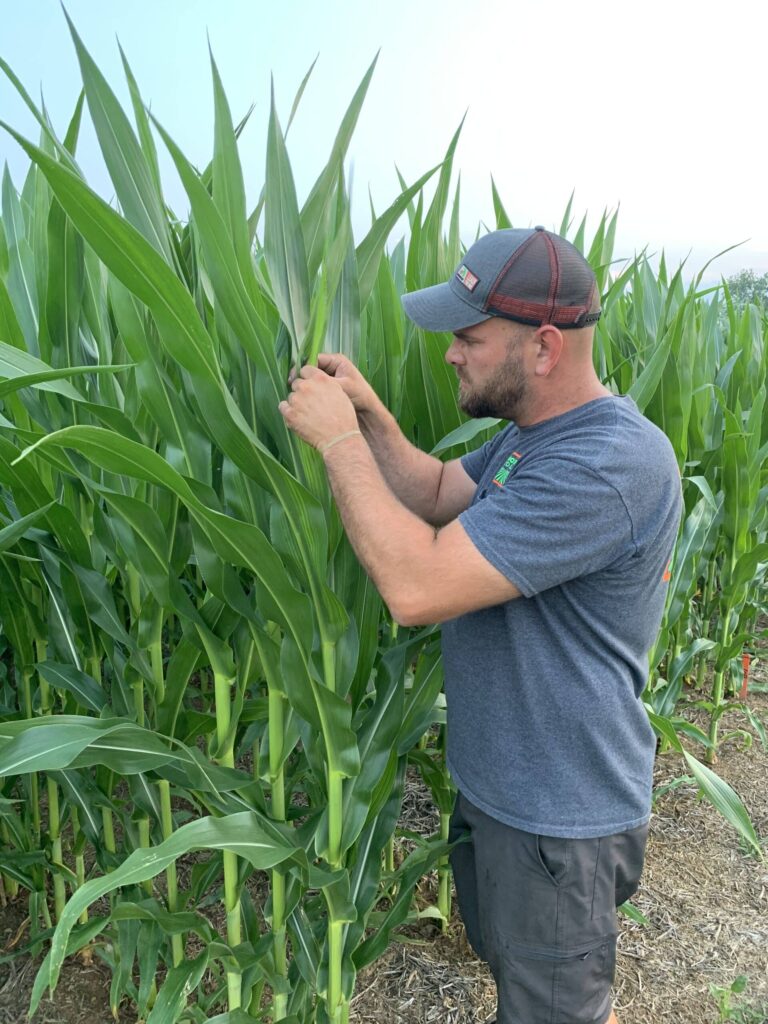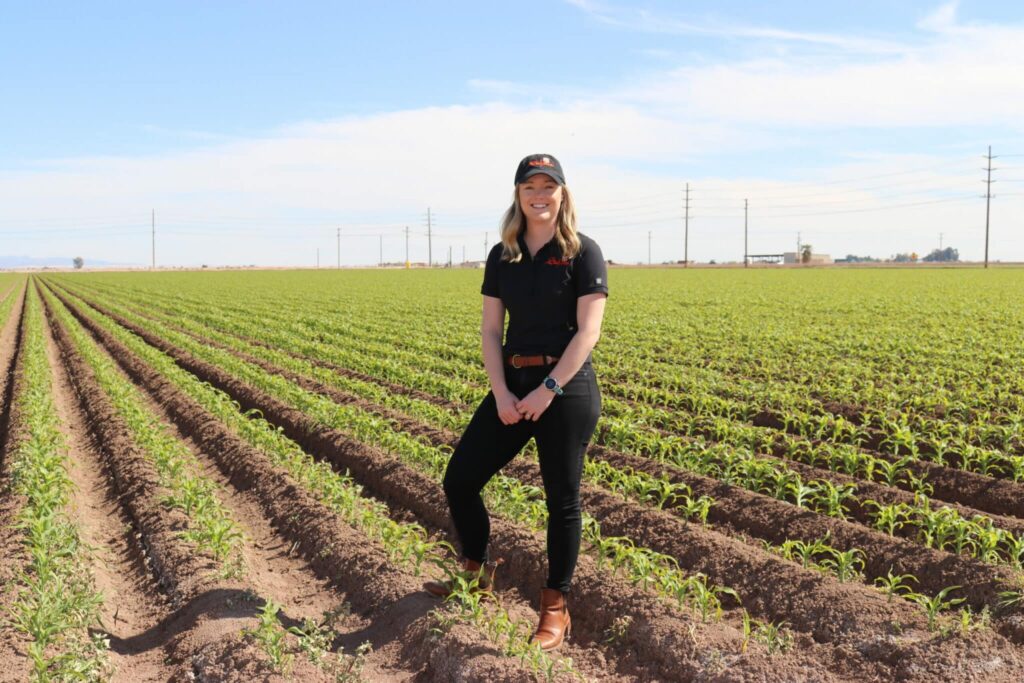As COVID-19 continues to grow in the United States, farmers face new, unprecedented challenges. Seed World sat down with four different farming operations to hear how they’ve been fairing during this time.
Fluctuating Weather Means Fluctuating Emersion
As a first-generation farmer, Karl Dirks’ love for the land and desire to farm came at an early age.
“I was babysat by a childless farming couple, so from a very young age, that’s all I wanted to do,” Dirks says, “I have always worked around agriculture, and when I got out of high school, farming was all I wanted to do.”
Farming in the Chesapeake Bay Watershed area between Hershey and Lancaster, Pa., Dirks’ Wolgemuth Farview Farms, grows corn, soybeans and wheat, along with a seed dealership and hog finishing operation that sees 15,000 head pass through its doors each year — a diversified approach that many operations in the area implement.
“We have a lot of livestock in the area; we have a lot of dairies, eggs and hogs. And the livestock kind of dictate what our rotations are going to be from year to year. Most guys plan their rotations based on their livestock numbers for the year,” Dirks says in response to the crop rotation shifts many areas of the United States have seen in light of COVID-19 agricultural market disruptions and below-breakeven forecasts.

Dirks says that, just as we have come to expect from the year, the 2020 growing season has not been without challenges. Sharing that while the pandemic didn’t necessarily change the way he is managing his farming operation, the weather has been an obstacle presenting as a very mild winter, followed by an unseasonably warm March and unseasonably cold April.
“It has been and interesting year. We had a mild winter with no snow to speak of, really. March was warm and we saw wheat and barley take off and get a few weeks’ growth on where we were the year before. But that all came to an abrupt halt in April—it was pretty much stagnant (in regards to supplying growing degree units), and by the time May arrived, we were behind where we were last year,” he says. “We were lucky though, a little further south barley got hit hard (with frost) and those farms lost anywhere from 30-80% of their yield potential.”
A positive in the otherwise grim agricultural outlook many are facing this year, Dirks says that his recently harvested wheat crop is one of the best he has grown and is optimistic for corn in the region, sharing that there is still time for the crop.
“We’ve got good, mellow soil this year, and we aren’t going to be lacking any growing degree units. If we can get some moisture, we will have a good corn crop,” he says.
Potatoes Up in Demand
Based 50 miles north of Denver, Strohauer Farms has been growing and supplying potatoes to northern Colorado and beyond for more than four generations.
“Our family has been growing potatoes in Weld County since 1910,” says Amber Strohauer, “My parents work full-time on the operation, and I had the opportunity to come back as the fourth generation to work on the farm.”
Today, Strohauer serves as Business Development for the operation that has grown to produce shallot onions, wheat, corn and triticale in addition to potatoes, helping to secure both retail and food service market opportunities.
“For us, 2020 has been a very optimistic outlook, and we feel really fortunate that we are here (north of Denver) and situated a little differently than other farms. We have always been more retail focused than food service, although we do both, and that has allowed us to thrive during the pandemic,” she says, “We have been busier than ever, and we know how fortunate we are.”

In 2013, the La Salle, Colo., company expanded operations to Clayton, N.M., as well as securing fields in Texas, using both of the new locations to produce Russet, Yukon and fingerling potatoes both conventionally and organically to fill the early-crop gap for packers.
“The majority of what we produce in the South is shipped out; we don’t usually bring anything into Colorado to package in our own branding. The Colorado piece of the operation sees all of the branding and retail,” Strohauer shares, noting that the operation currently packs around 200 different sizes of potatoes.
The challenges created by the pandemic for the Strohauer operation have been positive for the business, with demand and consumption of fresh potatoes peaking during the March-April initial stay-at-home orders.
“It has been challenging to stay year-round this year because we had to move so much product for demand,” Strohauer says. “We aren’t a 24/7 packing warehouse, so it was hard to keep up with demand. I have never seen so many walk-ins in one day as what we say during COVID-19. The door never shut.”
Strohauer credits much of this success to the business’ proximity to the Denver area and the area’s booming local and organic food movement. She also shares that, she believes, the United States is revisiting a simpler time, at least in terms of family togetherness.
“The one thing that we have seen throughout this pandemic, is families coming together to share meals. And as a potato grower, that makes me excited; people are familiar with potatoes, they store well, and families are adjusting to eating at home — all of which have helped to drive demand for the crop,” she says.
Markets Don’t Affect Rotations
When Matt and Janna Splitter returned to Matt’s family farm in the spring of 2011, the pair brought with them the work ethic and determination they would need to grow their operation.
“When Janna and I came back to the farm, I was still working for National Sorghum Association full-time, and we were farming full-time,” says the fifth generation Lyons, Kan., farmer, “I did that for a year and a half.”
Working their own ground during the day and their neighbors’ ground most of the night, the young couple was able to begin building a cash position.
“We were willing to put in the man-power and hours to grow, and we knew that was our only opportunity progress and improve,” Splitter says.
Over the course of the following years, the Splitters grew their operation considerably in terms of acres owned, leased and custom-farmed corn, milo, wheat and soybeans with the help of a mentor the couple continues to farm with and for, today.

“There was one gentleman in the community who I felt like was doing things the way I wanted to do things,” Splitter says of his and Janna’s first conversations with Lee Scheufler. “I was struggling mentally; I needed someone to bounce ideas off of, and so, I started asking him questions that led to many, many conversations.”
Splitter shares that over the course of the next few years, Lee and his wife, Margaret, asked he and Janna to begin taking over their operation.
“I never went to him with the anticipation of farming his ground; we were 30 miles apart,” he says, “In fact, I went to him because I thought with the distance between us, he wasn’t competition.”
That relationship: the sounding board for new ideas and the friendship, helped the Splitters begin to build an operation that was not only efficient, to weather the ebb and flow of the agricultural economy, but also an operation that fostered strong conservation.
“We don’t let markets effect our rotations. We plan our rotations for agronomic and conservation purposes; there are too many negatives to being reactionary to markets,” Splitter says, adding that barring the Black Swan events of 2020 and China trade negotiations, lower markets have been on his radar for some time. “We saw supply and demand issues. We were in an inverse market and futures were way lower than the cash price. So we knew that we had to figure out how to cash flow through,” he says. “Don’t get me wrong, we struggled and we still struggle. But we always have a plan.”
Splitter says that there is truth to the adage of being a “price maker” rather than a “price taker” and shares he and Janna have had the foresight to seek out and leverage opportunities outside of what a local elevator may offer.
“You have to be willing to look outside of your current marketplace,” Splitter says. “For a lot of years, we did everything within a 10-mile radius of our farm. Now we know that if we can store our corn and deliver to an ethanol plant that’s a little further out we might see a 40 or 60 cent increase. You have to create the margin.”
Making Concessions for Open Market Produce
After earning a CPA, Kate Elmore McCutcheon knew her place was in the family farming operation.
“I came back to the family farm in 2016. I knew how much joy it would bring my grandpa, someone I admired and treasured. So I came home and was able to work with him for a year before he passed, and that brought us both a lot of joy,” shares Elmore McCutcheon of her transition from public accounting to the many hats she now wears for her family’s Vale Ranches and Sahara Packing Company endeavors.
Located in the Imperial Valley, Elmore McCutcheon is the fourth generation to work on the family’s Brawley, Cali., farm, producing alfalfa, sudan grass, bermuda grass, celery, lettuce, carrots, sweet corn, and melons. She notes that the generations of leadership before her have been instrumental in the operation’s ability to withstand challenges and pivot for new opportunities.
“Our core values don’t focus on the short-term,” she says of the challenges new wage requirements and COVID-19 have imposed on the business. “They focus on how we can build a legacy for generations to come.”

Elmore McCutcheon says that both Sahara Packing Company and Vale Ranches, the farming operation behind the packing label, have had to make concessions for COVID-19, especially in their open market produce sales for lettuce and sweet corn.
“We did have some lettuce left at the end of March that we had to disc in, but not nearly as much as some of the farmers futher north,” she says. “We were lucky on that front.”
The biggest COVID related challenge the operation continues to face is uncertainty, Elmore McCutcheon says.
“We make rotational decisions in July, and right now we just don’t have a good indication of what to do. Our biggest challenge right now is trying to plan for the fall because we just aren’t sure how much of our open market produce we are going to be able to move.”
To compound the market challenges, the operation’s labor has also been affected by the restrictions COVID-19 mitigation has imposed.
“A lot of our workers are Mexican citizens who come over (to the United States) every day,” she says, “And because of COVID-19 restrictions there are a lot of challenges at the border — both coming and going.”
Another labor hurdle for Elmore McCutcheon’s family’s business is the increase in minimum wage enacted in 2016 with annual incremental increases until the $15 per hour minimum wage is reached.
“With increasing labor costs, our more labor-intensive crops such as lettuce and sweet corn are becoming increasingly more difficult to see positive returns,” she says, adding that higher labor wages have forced a significant portion of produce production out of California and into Mexico and Arizona.











